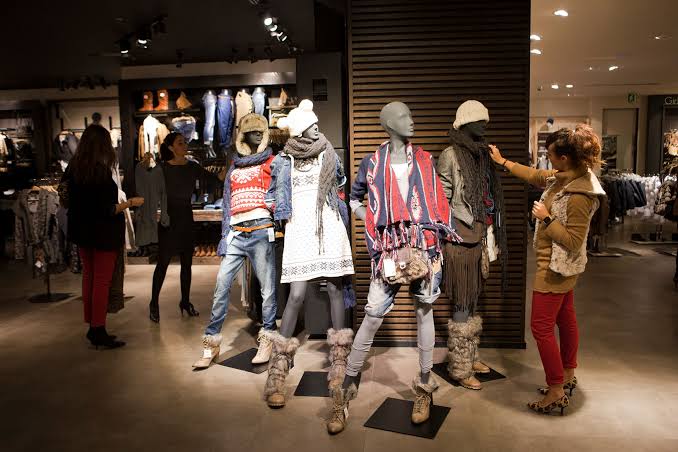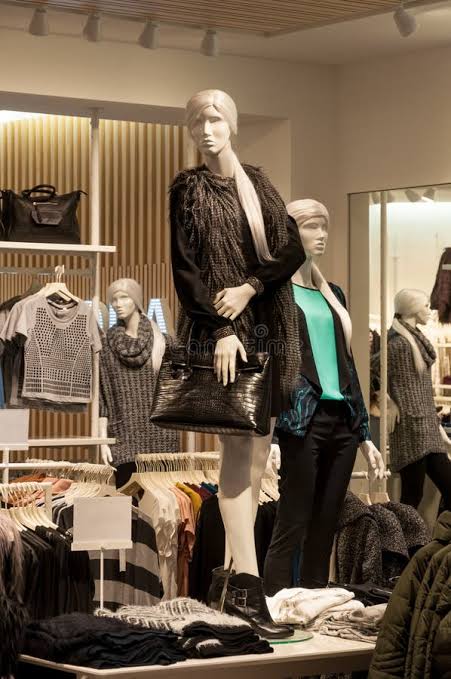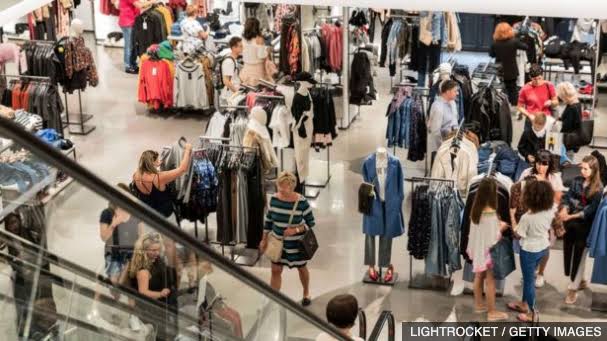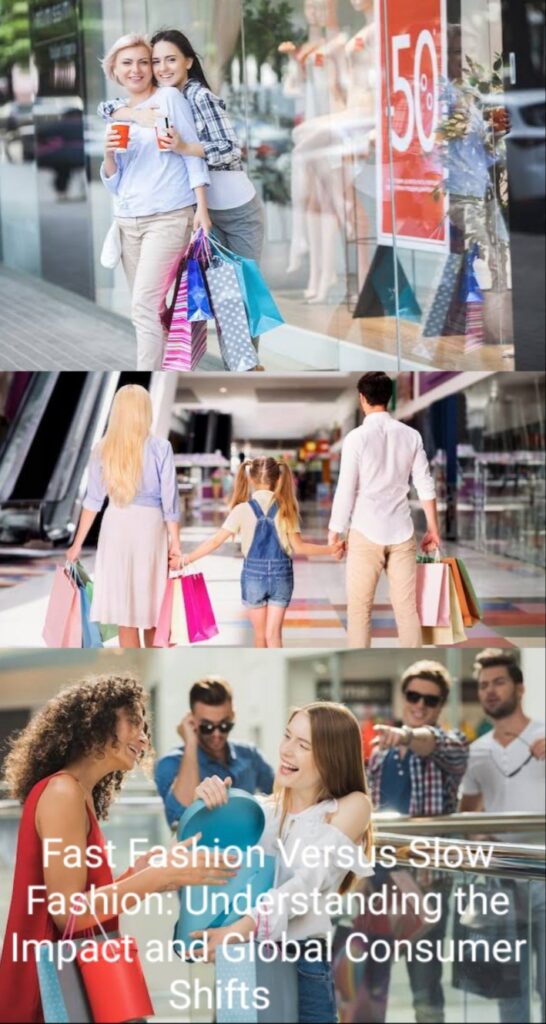In the ever-evolving realm of fashion, two terms have been making waves: Fast Fashion and Slow Fashion are two approaches to the industry that are are poles apart, differing greatly in how clothes are made and the cultural and environmental baggage they bring along. This blog post will delve into the nitty-gritty of each concept, explore why it’s crucial to contrast fast and slow fashion, unpack consumer attitudes, examine environmental consequences, and shed light on how diverse cultures shape consumer behavior.

Photo credit: Verily Magazine
What is Fast Fashion?
Fast Fashion is the practice of rapidly producing high volumes of clothing to fit the latest fashion. This trend-based business practice allows retailers to put new designs into stores within weeks at a low price. The key characteristics of fast fashion are:
Speed: Quick fashion retailers quickly copy runway looks and streetwear and deliver them to the buyer almost instantly.
Low Cost: The focus is on making clothes as cheaply as possible, typically by outsourcing manufacture to low-labor-cost countries.
Mass Production: Large quantities of the same model are produced so that a quick turnover can be ensured with quality being compromised for the sake of quantity.
Disposable: Fast fashion items are made to wear them a couple of times and then dispose of them, fueling a throwaway society.
Companies like Zara, H&M, and Shein are widely recognized as some of the fastest-fashion companies out there. As much as customers love the affordability and accessibility of these products, the environmental and ethical consequences of these actions are now being criticized.

Photo credit: Axios
What is Slow Fashion?
A direct contrast to fast fashion, Slow Fashion promotes a more considered, sustainable way of dressing. Slow fashion prioritizes quality over quantity, encouraging ethical production methods and sustainable materials. These are the defining features of slow fashion:
Timeless Design: Slow fashion centres on the creation of timeless, universal designs that can be worn for years on end instead of trendy pieces.
Sustainability: It pushes for the use of environmentally friendly materials, fair labor practices and minimizes waste through producing long-lasting clothing that is meant to endure.
Artisanal and Local: Slow fashion brands focus on the support of local communities and artisans, and most of them choose small-scale, handmade products.
Ethical Production: Slow fashion companies tend to place the highest priority on fair wages, safe working conditions, and transparency in supply chains.
Patagonia, Reformation, and Stella McCartney are usually quoted as leaders in slow fashion with their emphasis on sustainable production practices and environmental responsibility.

Photo credit: Certilogo
Why Compare Fast Fashion vs. Slow Fashion?
It is essential to understand the distinction between fast and slow fashion because the two systems have substantial effects on the environment, economy, and culture. The comparison can enable consumers to make more informed decisions regarding their shopping habits, and it enables fashion professionals to comprehend the larger trends influencing the future of the industry.
Here’s why the comparison is important
Environmental Impact: Fast fashion has a bad reputation for its harmful environmental effects, such as high waste, water usage, and carbon emissions. Slow fashion, on the other hand, seeks to minimize environmental damage by producing fewer, better-quality products.
Ethical Issues: Fast fashion’s dependence on low-cost labor, usually in developing nations with dubious working conditions, is a serious ethical issue. Slow fashion advocates fair pay, secure working conditions, and increased transparency, pushing companies to take greater responsibility for their effect on workers’ lives.
Consumer Behavior: Fast fashion has developed a culture of throwaway clothing, where clothes are viewed as temporary buys. Slow fashion promotes wiser consumption, challenging consumers to spend money on durable products and reconsider the worth of what they purchase.
Economic Disparities: Fast fashion makes it possible for individuals to purchase fashionable clothing at affordable prices, thus making fashion more affordable. The model, however, has the potential to fuel the downgrading of craftsmanship and the mistreatment of laborers. Slow fashion, as generally more costly, advocates for fair labor practices and improved working conditions, but its increased price may render it unaffordable for certain consumers.

Photo credit: RHS ECHO
How Different Cultures Are Shaping Consumer Habits
The manner in which individuals engage with fashion differs greatly from one culture to another, and these variations contribute to the acceptance of fast fashion and slow fashion. Here’s how cultural values affect consumer behavior and influence these two fashion models:
1. Western Consumerism: Consumerism is highly prevalent in most Western nations, especially the United States and Europe. Fast fashion retailers are common in these nations, providing consumers with the opportunity to follow constantly changing trends at affordable prices. There is also a movement towards sustainability and slow fashion due to the adverse environmental and ethical impacts of fast fashion.
2. Asian Markets: Asia contributes a great deal to the fashion world globally, with nations such as China, India, and Japan possessing their own unique fashion cultures. Fast fashion, for instance, is extremely popular in China because of its affordability and accessibility. The fashion culture of Japan, though, tends towards minimalism and durability, hence more in favor of slow fashion.
3. African Influence: Fashion in most African cultures is regarded as a symbol of identity and heritage. There is a strong cultural tradition of making clothing and textiles by hand, and slow fashion appeals to most communities on the continent. In urban centers, though, the global fast fashion brands have caused fast uptake, particularly among young consumers.
4. Nordic and Scandinavian Cultures: Scandinavian countries have a long history of minimalism, and these values are represented in their fashion. Scandinavian brands value quality, sustainability, and classic design, which is very much the slow fashion mantra. Customers in these nations tend to prefer fewer, but better-quality items that are longer-lasting and can be reused or recycled.

Photo credit: Climate360 News – Loyola Marymount University
The Environmental Impact: Fast Fashion’s Footprint
The effects of fast fashion on the environment have now become the most urgent issues for the fashion world. While we, as consumers, might not get to see the extent of the harm all the time, it exists, and it is on the rise.
Water Pollution & Resource Overconsumption: Fast fashion is dependent on inexpensive materials such as polyester, which is petroleum-derived and can take centuries to break down. Moreover, most of the synthetic materials utilized in fast fashion are not biodegradable, and thus the clothing products pile up in landfills. Further, production of these materials takes enormous amounts of water and energy, and production units are typically situated in regions where environmental protection is weak. This has serious implications for the local environment, such as water contamination due to dyeing operations and micro plastics in our oceans. For instance, the fashion sector contributes to about 20% of global industrial water pollution. This involves releasing chemicals, dyes, and waste into oceans and rivers as part of the manufacturing process. Fast fashion brands value high-volume production at a low price, and environmental conservation usually comes second.
Carbon Footprint: The fast fashion carbon footprint is enormous. The fashion industry alone creates over 100 billion pieces of clothing every year, and most of these are transported around the globe. All that goes a long way in producing massive carbon emissions, yet further fueling climate change. Although fast fashion offers people access to cheap clothes, the environmental cost of production and transportation can’t be dismissed. Conversely, slow fashion brands are reducing their carbon footprint. Through choosing local production, using natural materials, and ensuring factories operate on clean energy, slow fashion lessens the overall environmental footprint. These brands also utilize natural dyes and upcycled materials to minimize waste, which is in contrast to the resource-intensive method of fast fashion.

Photo credit: TEXtalks
The Ethical Considerations: Workers and Fair Trade
One of the biggest problems with fast fashion is that it relies on low-cost labor. The cheapness of fast fashion clothing is facilitated by the exploitation of factory workers, typically in nations with limited labor protection. Fast fashion companies will employ sweatshops or factories that underpay workers significantly below living wages and expose them to subpar working conditions. These workers usually endure long hours and dangerous conditions, so their labor goes unnoticed by the end-consumers of the finished product.
Slow fashion brands, however, are keen on upholding ethical working practices, giving good wages, and providing a safe workplace. Some even do more by producing direct relationships with artisans, giving them good payment for their efforts. Also, slow fashion focuses on transparency in the supply chain, making it possible for consumers to trace the origin of every article of clothing and understand more about the individuals involved in its production. Slow fashion also focuses on fair trade collaborations, which collaborate directly with communities and artisans to empower them economically. For instance, some slow fashion businesses obtain materials from local communities, which helps in supporting small businesses and generating employment in economically deprived regions.

Photo credit: CNN
Consumer Mindset: Quality vs. Quantity
The transition to slow fashion from fast fashion is also usually associated with a shift in attitude. Fast fashion has created a culture of “more is more,” where people are persuaded to purchase several items at a time at affordable prices, even without knowing if they need them or not. This leads to clothing going straight into landfills after limited use.
Slow fashion, on the other hand, promotes a thoughtful consumption. Consumers are urged to purchase less but to spend money on those items that are long-lasting, multi-functional, and ageless. Slow fashion promotes purposeful buying; purchasing something that is actually needed, as opposed to being driven by the need to keep buying something new. This also counters the “disposable fashion” culture, where fashion is regarded as short-lived, disposable, and something to continuously replenish.
Slow fashion also makes consumers consider the life cycle of their clothing. Rather than throwing away things when they are out of style, slow fashion encourages repair, upcycling, and reuse. This way of thinking leads consumers to prolong the life of their clothing, eventually minimizing waste.

Photo credit: Dreamstime.com
FAQs About Fast Fashion vs. Slow Fashion
1. What are the fundamental differences between slow and fast fashion?
Fast fashion is disposable, cheap, mass-produced, and trend-driven, while slow fashion is about sustainability, higher-quality products that are designed to be long-lasting, ethical production, and timeless designs.
2. Is slow fashion more pricey than fast fashion?
Yes, slow fashion is usually more expensive because of the focus on quality materials, ethical manufacturing, and smaller production runs. But slow fashion products are made to last longer, so they are a more sustainable investment in the long term.
3. How do I transition from fast fashion to slow fashion?
Begin by assessing your closet and purchasing fewer, better-quality pieces. Seek out brands that value sustainability and ethical manufacturing. Adopt second-hand shopping or clothing exchanges to maximize the lifespan of clothes.
4. How does fast fashion lead to environmental harm?
Fast fashion causes considerable environmental harm, including water pollution, too much waste, and high carbon emissions. The fast production and disposal of garments lead to increased landfill overflow and depletion of natural resources.
5. Are there advantages to fast fashion?
Affordability and accessibility are offered through fast fashion, enabling individuals to wear fashionable clothing at bargain prices. It also democratizes fashion, providing access to fashion for the masses.
6. How do I minimize my carbon footprint when clothing shopping?
Choose sustainable brands, purchase fewer but better-quality items, select second-hand clothing, and think about the life cycle of the garments you buy. Refrain from impulse purchases and select versatile pieces that can be styled in various ways.

Photo credit: LinkedIn
Conclusion: So What to Prefer Then? Fast or Slow Fashion
The fashion world is changing, and the difference between fast and slow fashion is critical to the understanding of how our consumption patterns affect the planet. Fast fashion is convenient and cheap, but at a significant environmental and moral price. Slow fashion, although more costly and less available, promotes sustainability, ethical production, and conscious consumption.
As people become more conscious of the consequences of their actions, we have hope for a better, more sustainable, and more ethical fashion future. Slow fashion is one way we can play a role in making our dressing more reflective and responsible.

Photo credit: Freepik
Author: Raja Bahar Khan Soomro
You can also read the following suggested blog articles just by clicking over them
2. Diversity on the Runways: How Global Fashion Weeks Are Celebrating Inclusivity
Recommended1 recommendationPublished in apparel, Bathing Suits, Bridal, celebrity fashion, Health, Our Fashion Passion, Petite, Plus Size, Pop Fashion, Shoes, street style, Uncategorized









